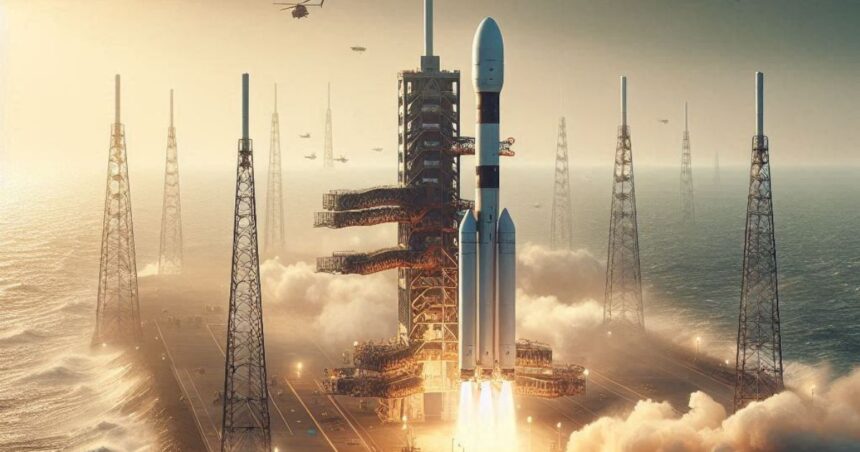The Indian Space Research Organisation (ISRO) announced plans to build a third launch pad at its Sriharikota spaceport. This new launch pad will support ISRO’s next-generation rocket, the New Generation Launch Vehicle (NGLV), which could also land on the sea!
The third launch pad is part of ISRO’s efforts to expand its capabilities and ensure redundancy. Currently, ISRO has two launch pads at Sriharikota, but the second one was re-engineered to accommodate the GSLV rocket, which cannot handle the cryogenic stage. The new launch pad will support updated launch protocols and testing, aiming for higher payload capacities and reusability.
ISRO chairman S Somanath revealed that the NGLV will be designed to be reusable and could be recovered both by land and sea. Initially, the rocket will return to land, but sea recovery is planned for the next phase. This innovative approach aims to reduce costs and improve the sustainability of India’s space program.
The NGLV represents a major technological advancement for India, offering a payload capacity three times that of the current LVM3 rocket while only increasing costs by 50%. The vehicle will also incorporate modular green propulsion systems, aligning with global efforts towards sustainable space exploration.

The establishment of the third launch pad is a significant step for ISRO as it expands its space mission both in size and vision. The new pad will not only serve as redundancy for the second launch pad but will eventually be designed to accommodate the NGLV. Once ready, even the stage testing of the rocket will happen at Sriharikota and not be taken to Mahendragiri.
The NGLV’s reusability is a key feature that promises to lower the cost of space access significantly. This will make space missions more affordable and accessible, opening up new opportunities for scientific research and commercial ventures.
ISRO’s plans to build a third launch pad and develop a next-generation rocket that can land on the sea are exciting developments in India’s space program. These initiatives will enhance ISRO’s capabilities, reduce costs, and contribute to sustainable space exploration. As ISRO continues to innovate and expand, the future of space missions looks promising and full of possibilities.




